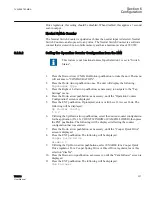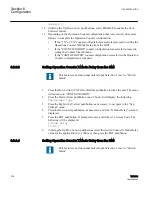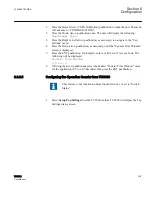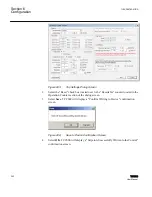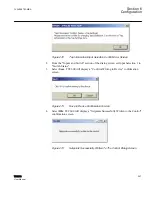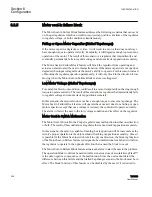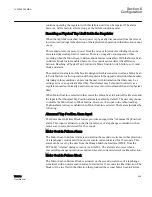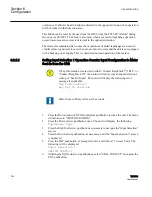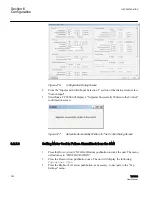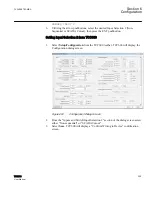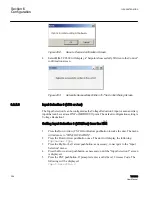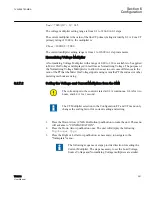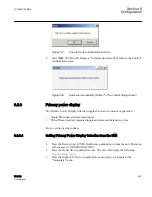
6.2.5
Motor seal-in failure block
The Motor Seal-in Failure Block feature addresses the following scenarios that can occur
on Cooper regulators which can result in incorrect tap position, a failure of the regulator
to regulate voltage, or both conditions simultaneously.
Failing or Open Motor Capacitor (Stalled Tapchanger)
If the motor capacitor degrades over time, it will result in a motor that does not always
have enough torque to operate correctly. Eventually, it will degrade enough to prevent any
operation of the motor. The result of this scenario is a regulator that intermittently and
eventually permanently fails to regulate voltage and cannot track tap position accurately.
The Motor Seal-in Failure Block feature will block the regulator from operating and
actuate an alarm to alert the user to this malfunction. If the motor capacitor is not open but
degraded, then input voltage affects the motor’s ability to operate. For this reason, instead
of blocking the regulator operation permanently, it will only block in the direction it was
moving when the Motor Seal-in Failure Block feature was triggered.
Low Motor Voltage (Stalled Tapchanger)
For example a brown out condition, could result in a motor temporarily not having enough
torque to operate correctly. The result of this scenario is a regulator that intermittently fails
to regulate voltage and cannot track tap position accurately.
In this scenario, the motor also does not have enough torque to execute a tapchange. The
Motor Seal-in Failure Block feature will operate the same as it does for a failing or open
motor capacitor except that once voltage is restored, the control will operate normally.
The alarm will alert the user to the low voltage condition and its effect on the regulator.
Motor Seal-In Switch Malfunction
The Motor Seal-in Switch in the Cooper regulator may malfunction in either one direction
or both. The result of this condition is a regulator that cannot track tap position accurately.
In this scenario, the motor is capable of turning, but tap position will be inaccurate as the
circuit’s proper operation is the only method of tracking tap position accurately. Since it
is possible for the Motor Seal-in switch to fail in only one direction, the blocking function
of the Motor Seal-in Failure feature is designed to be unidirectional such that it will allow
the regulator to operate in the opposite direction that caused the block to occur.
The Motor Seal-in Failure Block feature actuates an alarm to alert the user to the problem.
The operation block would not be needed in this scenario as loss of accurate KeepTrack™
is the only negative consequence of the malfunction. Since the unit cannot detect the
difference between this failure and the Stalled Tapchanger scenario, the block must be in
effect. The block function of this feature can be disabled by the user if it is desired to
Section 6
1VAC388793-MB A
Configuration
348
TCC300
User Manual
Summary of Contents for TCC300
Page 1: ...Digital Tapchanger Control TCC300 User Manual ...
Page 2: ......
Page 3: ...Document ID 1VAC388793 MB Issued 2016 08 10 Revision A Copyright 2016 ABB All rights reserved ...
Page 26: ...20 ...
Page 34: ...28 ...
Page 91: ...1VAC388793 MB A Section 3 Operation TCC300 85 User Manual ...
Page 126: ...120 ...
Page 176: ...Section 4 1VAC388793 MB A TCC600 170 TCC300 User Manual ...
Page 260: ...254 ...
Page 328: ...322 ...
Page 494: ...488 ...
Page 556: ...550 ...
Page 580: ...574 ...
Page 600: ...594 ...
Page 700: ...694 ...
Page 710: ...704 ...
Page 712: ...706 ...
Page 713: ...707 ...
Page 714: ......
Page 715: ......




